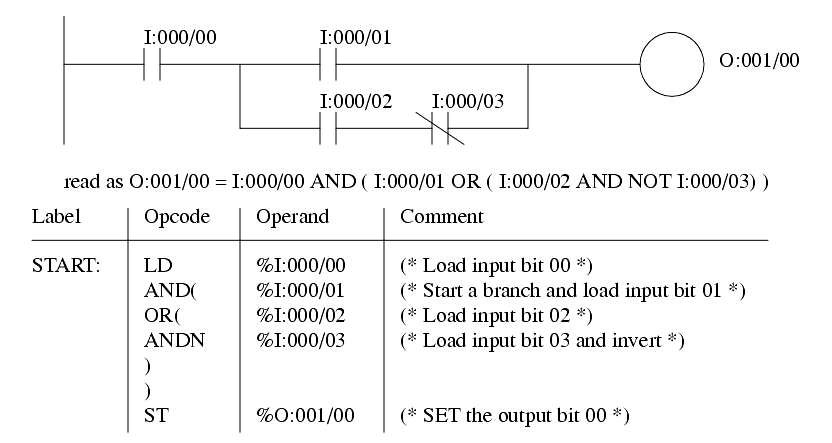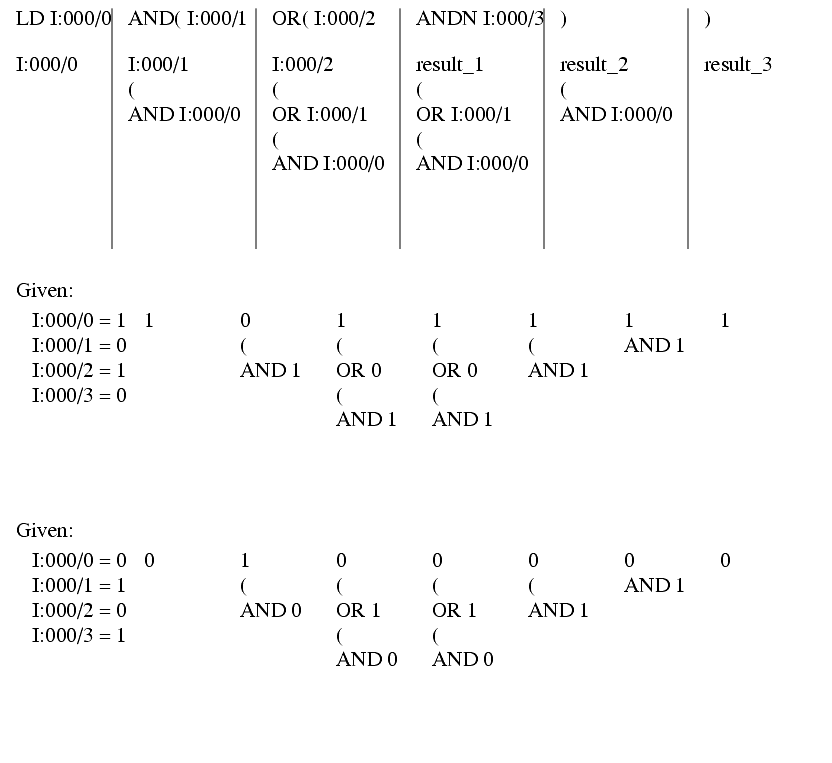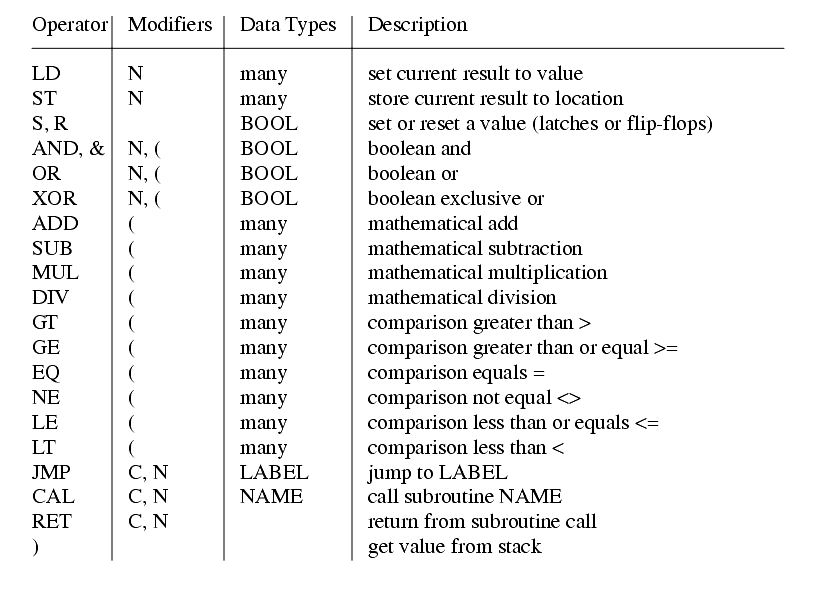
|
|
|
18.2 THE IEC 61131 VERSION
������������To ease understanding, this chapter will focus on the process of converting ladder logic to IL programs. A simple example is shown in Figure 254 using the definitions found in the IEC standard. The rung of ladder logic contains four inputs, and one output. It can be expressed in a Boolean equation using parentheses. The equation can then be directly converted to instructions. The beginning of the program begins at the START: label. At this point the first value is loaded, and the rest of the expression is broken up into small segments. The only significant change is that AND NOT becomes ANDN.

An important concept in this programming language is the stack. (Note: if you use a calculator with RPN you are already familiar with this.) You can think of it as a do later list. With the equation in Figure 254 the first term in the expression is LD I:000/00, but the first calculation should be ( I:000/02 AND NOT I:000/03). The instruction values are pushed on the stack until the most deeply nested term is found. Figure 255 illustrates how the expression is pushed on the stack. The LD instruction pushes the first value on the stack. The next instruction is an AND, but it is followed by a '(' so the stack must drop down. The OR( that follows also has the same effect. The ANDN instruction does not need to wait, so the calculation is done immediately and a result_1 remains. The next two ')' instructions remove the blocking '(' instruction from the stack, and allow the remaining OR I:000/1 and AND I:000/0 instructions to be done. The final result should be a single bit result_3. Two examples follow given different input conditions. If the final result in the stack is 0, then the output ST O:001/0 will set the output, otherwise it will turn it off.

A list of operations is given in Figure 256. The modifiers are;
These operators can use multiple data types, as indicated in the data types column. This list should be supported by all vendors, but additional functions can be called using the CAL function.

Search for More: |

Custom Search
|

|